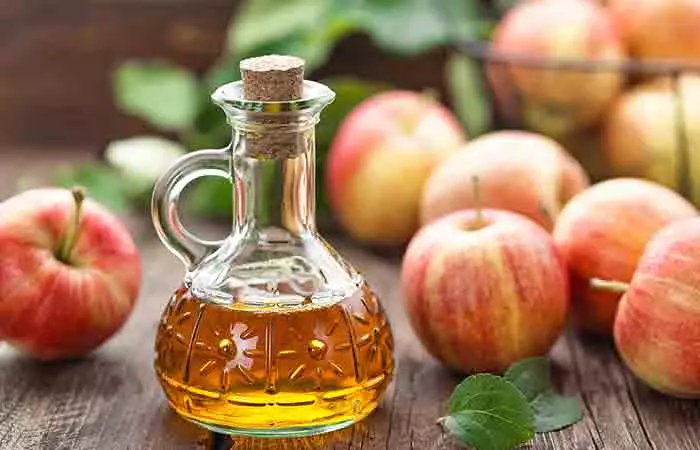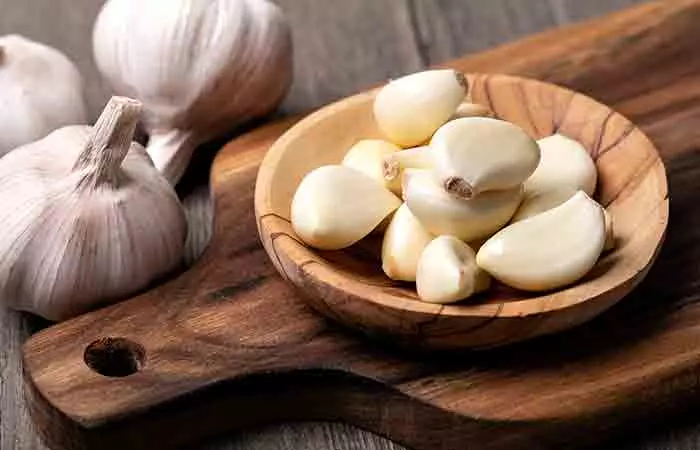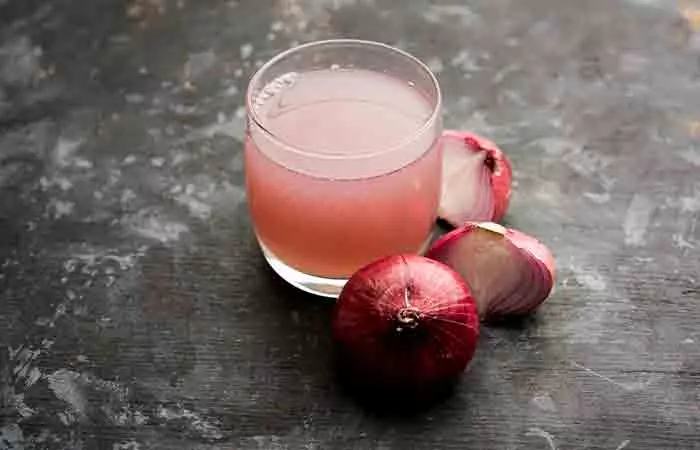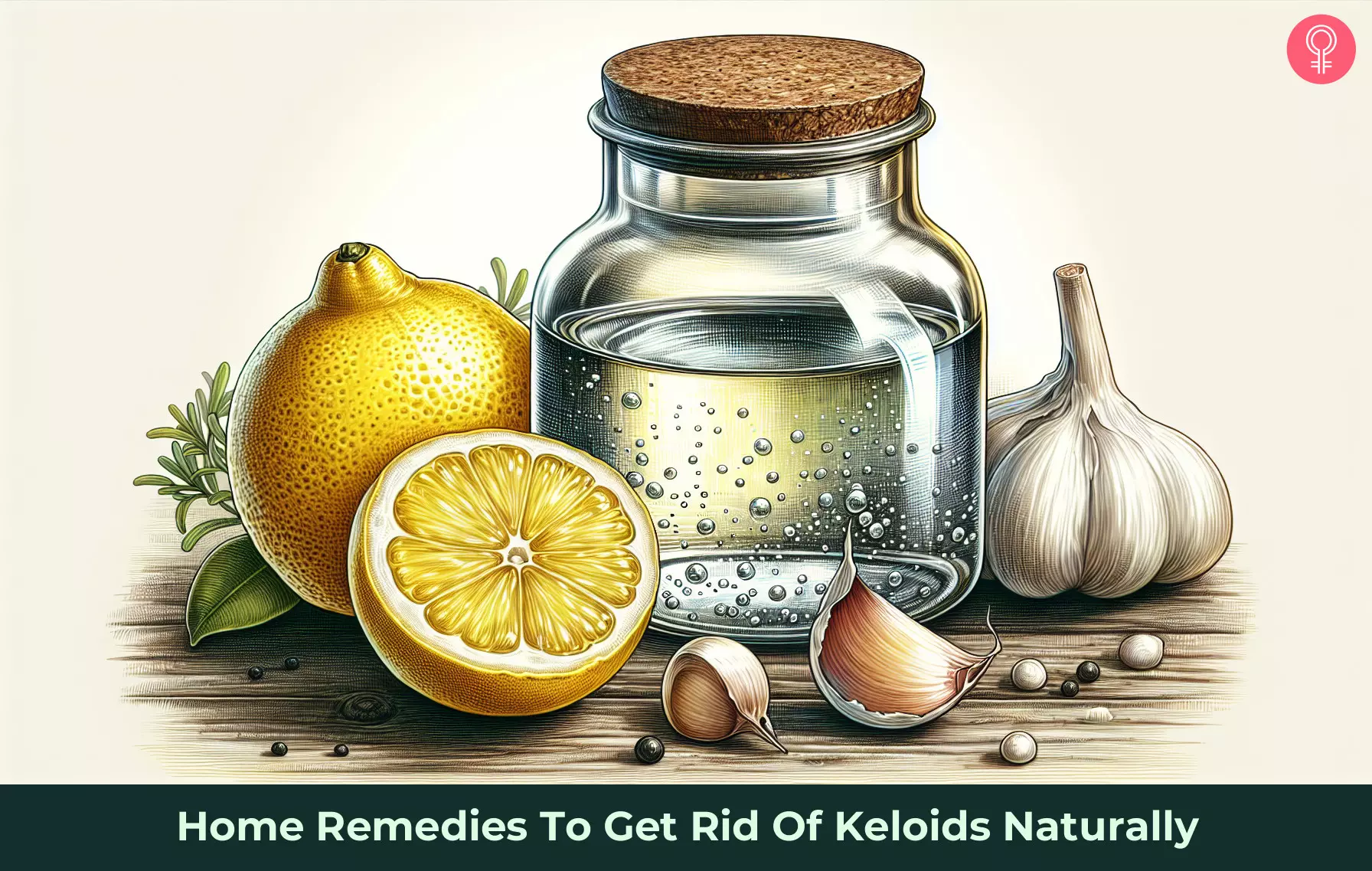A multicenter cross-sectional study was conducted on 972 individuals with excessive scarring (keloids or hypertrophic scars) and compared to 229,106 controls. Out of the 972 individuals, females (65% vs 55%) and a lower proportion of White ethnicity (86% vs 95%) had excessive scarring when compared to the controls.
What Are Keloids?
Keloids are fibrous growths due to abnormal wound healing in response to skin trauma or inflammation (1). These raised scars occur where the skin has healed and can be bigger than the original wound. Though keloids can appear anywhere on the body, they are commonly found on cheeks, earlobes, chest, and shoulders. However, not all scars that form after an injury are keloids. Keep reading to know how a keloid scar looks.
Symptoms Of Keloids
Keloid scars may develop as early as 1 to 3 months or even a year after the injury. The characteristics of a keloid scar are as follows:
Flesh-colored or hyperpigmented lesion Raised scar with a flat surface It can be soft, lumpy, rubbery, or hard Itchy, painful, and tender It may become darker as it grows
Any type of wound that leaves behind scars. However, certain factors may cause overgrowth and keloid scar. Read on to know what causes keloid scars.
What Causes Keloid Scars?
Wound healing occurs in three stages: inflammatory, fibroblastic, and maturation. Keloid scars develop when the fibroblastic phase persists longer and unchecked. The connective tissues overreact, resulting in an overproduction of collagen and cytokines, forming keloid scars (1). Some of the common skin injuries that can cause keloid scarring are:
Acne scars Ear piercing Surgical wounds Scratches Chickenpox Burns Insect bites Tattoos Vaccination sites
Annesha Adams, a lifestyle content creator, struggled with Keloids since she was 14 and shared her journey in her video. She says, “I have one keloid in my ear and one at the side of my leg (i).” She further adds that they look like 3D scars that do not heal at the same level as your skin, grow in size, and are itchy. Annesha further narrates, “You can get your keloid from any abrasion to your skin like piercing, that’s how I got my keloid.” She has been using steroid injections to treat it. Some people might be at more risk of developing keloids. The risk factors include:
People with a darker skin tone People of African, Asian, and Hispanic descent Pregnant people Teenagers going through puberty People with a family history of keloids
Keloids are hard to get rid of, but you may try some home remedies and medical treatments to shrink or soften them and promote skin healing. Keep reading to find out how.
How To Get Rid Of Keloids
Home Remedies For Keloids Removal
1. Apple Cider Vinegar For Keloids
Apple cider is a chemical exfoliant and astringent. It may help in minimizing the redness and size of the scar (3).
Apple cider vinegar Water
Repeat this twice daily for 4-5 weeks.
2. Aspirin For Keloids
Topical aspirin is very useful in treating keloids. Its anti-inflammatory and exfoliating properties prove beneficial in this case (4). However, it should be used under a physician’s guidance.
3-4 aspirin tablets Water
Apply this once every day or every alternate day.
3. Lemon Juice For Keloids
Vitamin C may help in proper wound healing and preventing keloid scars (5). Lemon is rich in vitamin C and may help reduce keloids to a certain extent. Anecdotal evidence suggests that within a few weeks of application, you will notice changes in the flexibility, texture, and color of the skin. Lemon juice Repeat this 2 times daily.
4. Baking Soda For Keloids
Baking soda is an abrasive agent that may help in exfoliating and keeping the skin clean. It also soothes irritated skin and reduces any swelling (6), (7). However, there is no scientific evidence to prove its effectiveness in treating keloids.
1 teaspoon of baking soda 3 teaspoons of 3% hydrogen peroxide Cotton ball
Repeat this 2 times daily
5. Sandalwood And Rose Water For Keloids
Sandalwood is known for its skin regenerating property, and rose water has anti-inflammatory properties and is a skin toner (8), (9). These properties may help manage keloids.
1-2 teaspoons of sandalwood powder Rose water
Do this every night.
6. Garlic
Garlic may speed up wound healing and may reduce the risk of scarring (10). Therefore, applying garlic may also prevent keloids. 1-2 garlic cloves You can also use garlic oil instead of fresh garlic cloves. Repeat this every day, preferably 2 times a day.
7. Grapefruit Seed Extract For Keloids
Grapefruit seed extract contains antioxidants, vitamin C, and phytochemical compounds that may aid in skin repair and reduce the risk of scars (11). This may help reduce the size of the keloids.
1 teaspoon of water 2-3 drops grapefruit seed extract Q-tip
Do this 2 times a day.
8. Honey For Keloids
Honey prevents dead cells from accumulating in the affected area, enhances blood circulation, and speeds up the healing process (12). Tualang honey, in particular, is very effective in reducing keloids (13). Honey You can apply honey 2 times daily.
9. Aloe Vera Gel
Aloe vera gel has antiseptic and antibacterial properties that help in healing keloids (14). It also reduces soreness and inflammation and has wound healing properties (15). An aloe leaf Apply aloe vera gel 2 times a day.
10. Petroleum Jelly
A simple way to reduce keloid scars is to keep the area moisturized and hydrated at all times. Petroleum jelly, being an occlusive agent, traps the moisture and helps in scar removal (16). However, there is no scientific evidence to prove this effect. Petroleum jelly Clean the area and massage it with petroleum jelly. Reapply the jelly 3-4 times in a day.
11. Onion Juice
The effectiveness of onions in reducing keloid and hypertrophic scars was tested a few years back. The study found that onion extract or juice could improve the appearance of the scars in a short period (17).
1 white onion A cheesecloth Cotton
Repeat this 3-4 times in a day.
12. Oils To Treat Keloids
Multiple combinations of oils may work in fading away keloid scars. Fish oil and mineral oil, in particular, help manage keloids (18). Some essential oils possess skin regenerating and healing properties, along with antioxidants, to aid the carrier oil in healing the keloids. Many people suggest tea tree oil for keloids, but there is no scientific proof that it can improve them. However, its anti-inflammatory and antiseptic properties can help reduce their appearance to some extent.
1 tablespoon of jojoba oil A few drops of rosehip seed oil
OR
1 tablespoon of virgin coconut oil Few drops of tea tree essential oil 1-2 drops of neem oil (optional)
OR A few drops of Jamaican black castor oil OR A few drops of frankincense essential oil Apply a blend of the oils mentioned to the affected area and massage gently. You can repeat this remedy several times every day for better results.
13. Rosehip Oil
Rosehip oil is derived from the fruits and the seeds of the wild rose bush. It is rich in antioxidants, fatty acids, and vitamins A and E, which may help improve skin texture, stimulate collagen production, restore damaged skin cells, and reduce the appearance of scars, including keloids (19). However, more studies are warranted to support these claims. You Will Need
A few drops of rosehip oil
What You Have To Do
Clean the affected area with warm water and mild soap. Pat it dry gently. Gently massage a few drops of rosehip oil on the affected area and let it dry.
How Often You Should Do This You can do this twice a day While there is little evidence to support its ability to shrink keloid size or improve scar tissue, acupuncture may help control pain or inflammation around the keloid. These home remedies are easy, effective, and can help in scar treatment. However, they may not work for everyone. In such cases, it is better to consult a doctor for medical treatments.
Medical Treatments For Keloids
Removing keloids is not easy, and doctors often use a combination of more than one dermatology treatment for best results. The treatment options for keloids are as follows:
Corticosteroid Injections: It may help shrink the scar and reduce the symptoms of itching and burning. Cryotherapy: It involves freezing the scar tissue to reduce the size and hardness of the scar. Surgical Excision: This surgical removal method involves cutting out the keloid through surgery. In most cases, the keloids may grow back if steroid injections and radiotherapies do not follow the surgery. Radiotherapy: It may help prevent the keloids from growing back after the surgery. Laser: This treatment helps flatten the keloid.
Other treatments like using silicone gel sheets, intralesional botox, or fluorouracil may also help reduce the size and improve the appearance of keloids. However, since treating keloids is not easy, it is always best if you can prevent them. Here are a few tips.
Prevention Tips
Living With Keloids
Keloids are benign and may not need treatment. However, sometimes, the overgrowth may cause emotional distress. There is nothing wrong if you do not want to remove your keloid scars. If you feel they are affecting your daily life, causing pain and discomfort, you should consult a dermatologist to get them removed. These treatments can help minimize their appearance and reduce the pain and itchiness. Can I flatten my keloid? Dr. Emily Wood, MD, a board-certified dermatologist, says, “Yes, numerous methods exist to treat keloids. Typically, a combination of injections of Kenalog and 5-fluorouracil and laser can dramatically improve keloids.” Should I be worried about keloids? Dr. Wood says, “Keloids themselves are not worrisome, although they can be painful. If you have a rapidly growing or changing keloid, I recommend getting it checked to ensure it is not a rare type of cancer that can sometimes mimic a keloid called dermatofibrosarcoma protruberans.” Can keloids turn cancerous? Dr. Natalie Kash, MD, FAAD, a board-certified dermatologist, says, “Although true keloids do not usually turn cancerous themselves, there are other conditions, such as cancers, that can look like a keloid. Thus, I would recommend having any concerning skin lesion checked out by a dermatologist to get an accurate diagnosis before assuming what it is and trying to treat it at home.” Does massaging help keloids? According to Dr. Kash, “In some cases, massage can help keloids; however, in other cases, chronic rubbing or friction can actually cause the keloid to grow.” Can Vaseline treat keloids? According to Dr. Wood, “Vaseline does not treat keloids. However, it will not harm keloids if applied.” Are keloid scars contagious? A keloid scar is not contagious at all. It is the result of skin injury that you have suffered personally and will spread with contact. Are Keloid Scars Contagious? A keloid scar is not contagious at all. It is the result of skin injury that you have suffered personally and will spread with contact. Are keloids dangerous? No, they are not dangerous. They mostly develop at a site of a previous skin injury and can be treated easily. Will I need surgery to get rid of the keloid? You may need surgery if the keloid is big and does not reduce in size with home remedies. Consult your doctor to get more clarity on the issue. Will an over-the-counter cream help keloid? Yes, an over-the-counter cream may help reduce the appearance of the keloid. However, it is best to consult your doctor before applying any creams. Can I get rid of a keloid on my piercing? Yes, a keloid on the piercing can be removed by surgical excision. What happens if you scratch a keloid? Scratching a keloid may make it grow due to the excess growth of scar tissue. Is it good to massage keloid scars? Massaging a keloid scar may not affect or reduce its appearance and size. Can you pop a keloid? No, you should not pop a keloid. Keloids do not have any deposits that you can pop out. Moreover, picking or “popping” a keloid can increase the risk of infection. Does salt water reduce keloids? There is no scientific evidence to suggest that salt water can reduce keloids. However, many users claim that washing the scar with sea salt water can help with the inflammation on the site. Can you cut off a keloid with scissors? No. Slicing or cutting off a keloid increases the risk of an even bigger keloid developing on the same site. What are the risks of keloid treatment? Risks associated with keloids include infection, skin discoloration, scarring, and recurrence, especially after laser treatments or surgery. Treatments may hurt, slow down healing, and in some cases make the keloid look worse. If you notice any of these symptoms, please consult a doctor immediately. How long does it take for a keloid to heal after treatment? Depending on the treatment plan and individual factors, recovery time from keloids can range from a few weeks to several months. While less invasive alternatives like injections or cryotherapy may show relief in a few weeks, more invasive procedures like surgery may require up to three to six months for a full recovery.
Illustration: Home Remedies To Get Rid Of Keloids Naturally
Check out this video to learn about keloid and hypertrophic scars and tips to get rid of them. Learn about natural remedies for smoother, healthier skin and say goodbye to scars!













